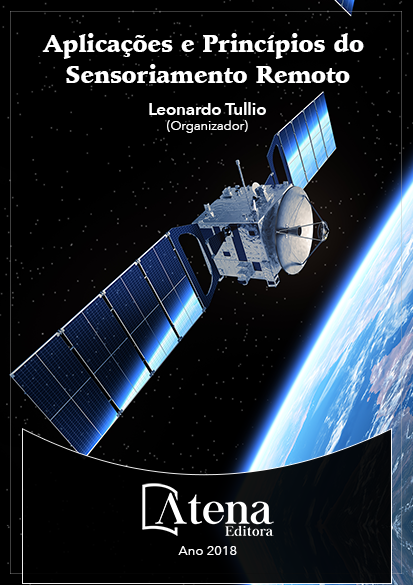
Temperatura de brilho por meio de imagens Landsat-8 na Área de Proteção Ambiental Tietê no estado de São Paulo
O objetivo deste trabalho foi analisar
a temperatura de brilho na Área de Proteção
Ambiental Tietê, localizada na região oeste do
Estado de São Paulo, por meio de imagens
termais de satélite. Para a área de estudo
também foi obtido o Índice de Vegetação por
Diferença Normalizada (NDVI) com o objetivo
de comparar as informações de temperatura de
brilho em locais com maior e menor cobertura
de vegetação. Foram adquiridas duas imagens
do satélite Landsat-8, sensores OLI e TIRS,
junto ao site do Serviço Geológico Americano
(USGS) no período de março e abril de 2016. A
metodologia utilizada para obter a temperatura
de brilho foi a indicada no manual do USGS
(2016) para usuários de imagens do satélite
Landsat-8. Dados meteorológicos das estações
automáticas disponibilizadas no site do Instituto
Nacional de Meteorologia (INMET) foram
utilizados para comparação com os resultados
obtidos por imagens de satélite. Ao analisar
as imagens de NDVI com as de temperatura
de brilho observou-se que onde havia pouca
ou nenhuma cobertura vegetal a temperatura
de brilho apresentava-se mais elevada, sendo
essas áreas representadas pela urbanização
na área central e as regiões próximas ao limite
da APA sendo representadas por solo exposto.
Já nas áreas onde havia uma densa cobertura
vegetal, ou seja, NDVI mais alto, os valores de
temperatura de brilho estavam mais baixos.
Temperatura de brilho por meio de imagens Landsat-8 na Área de Proteção Ambiental Tietê no estado de São Paulo
-
DOI: Atena
-
Palavras-chave: geotecnologias, sensoriamento remoto, infravermelho termal, índice de vegetação.
-
Keywords: geotechnologies, remote sensing, thermal infrared, vegetation index.
-
Abstract:
The objective of this work was
to analyze the brightness temperature in the
Tietê Environmental Protection Area, located in
the western region of the State of São Paulo,
through satellite thermal images. For the study
area, the Normalized Difference Vegetation
Index (NDVI) was also used to compare the
brightness temperature information in sites with
higher and lower vegetation cover. Two images
of the Landsat-8 satellite, OLI and TIRS sensors,
were acquired near the site of the US Geological Survey (USGS) in March and April
2016. The methodology used to obtain the brightness temperature was indicated in
the USGS manual (2016) for users of Landsat-8 satellite images. Meteorological data
of the automatic stations made available on the website of the National Institute of
Meteorology (INMET) were used to compare the results obtained by satellite images.
When analyzing the NDVI images with the brightness temperature, it was observed that
where there was little or no vegetation cover the brightness temperature was higher,
these areas being represented by the urbanization in the central area and the regions
near the limit of the APA being represented by exposed soil. In areas where there was
a dense vegetation cover, that is, NDVI higher, the values of brightness temperature
were lower.
-
Número de páginas: 15
- Denivaldo Ferreira de Souza


